Every homeowner dreads seeing water damage since it can compromise the foundation of their house. Water coming from the baseboard when it rains can be challenging to fix. If you're wondering what steps to take, you've come to the right place. We've researched and found the best solutions to this problem.
You might be able to fix water coming from your baseboard when it rains without spending a lot of money on repairs or extensive upkeep. Here's what to do if you notice leaking:
1. Inspect cracks and water stains
2. Clean the baseboards
3. Sand the areas
4. Wipe off dust
5. Apply primer
6. Paint
7. Seal it
8. Ventilate the area
Any area of your home with water leaks can be unsafe and expensive to fix. In this post, we will discuss the signs of water damage, the causes of water coming from your baseboard, and the procedures to take when you encounter leaks. So keep on reading.
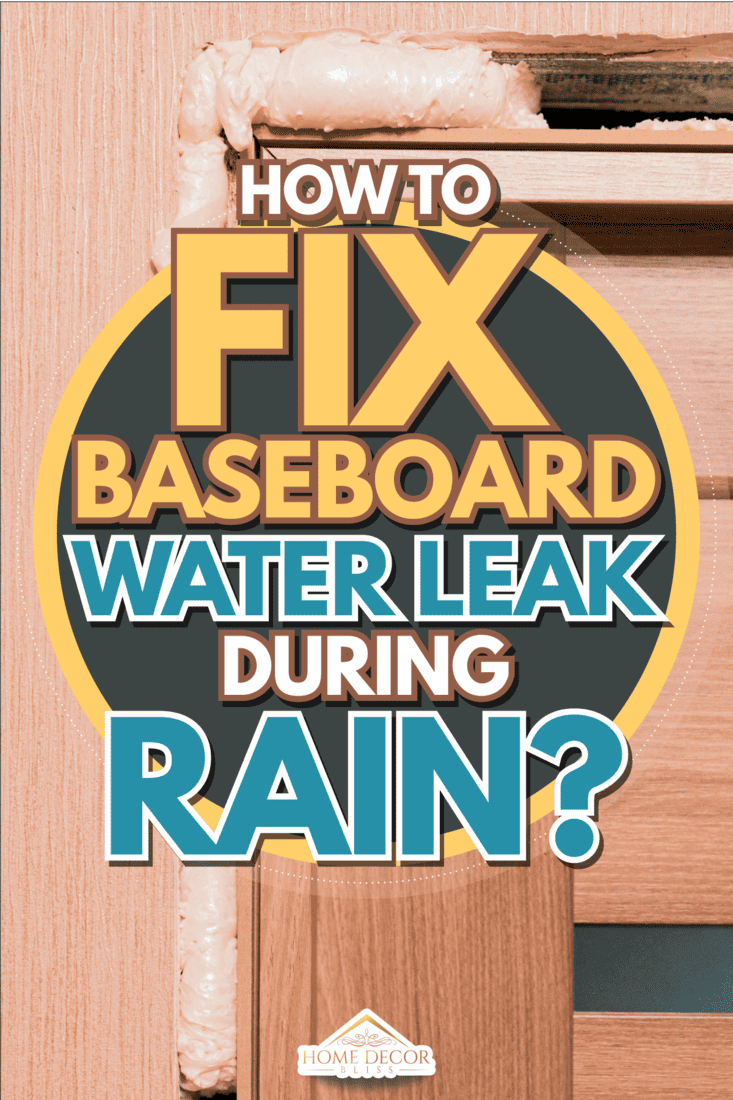
Signs Of Water Damage In Baseboards
Hidden water leaks are harmful because they can result in major problems like structural damage and mold growth. Hidden mold can cause significant harm and health problems, including allergies and infection, in the individuals exposed. We may include affiliate links and curated AI content to highlight top design styles.
You should keep an eye for these indicators of water damage:
1. Growth Of Mold

Moisture is the ideal condition for mold growth. There is likely a moisture source behind your baseboard, especially if it is in a location close to any plumbing fixtures.
Large concentrations of mold on your baseboard might seriously harm your health, but little amounts are typically nothing to worry about. Mold can cause your baseboard to get discolored or show visible spores. It emits a musty odor that you can use to detect concealed leaks.
2. Water Stains
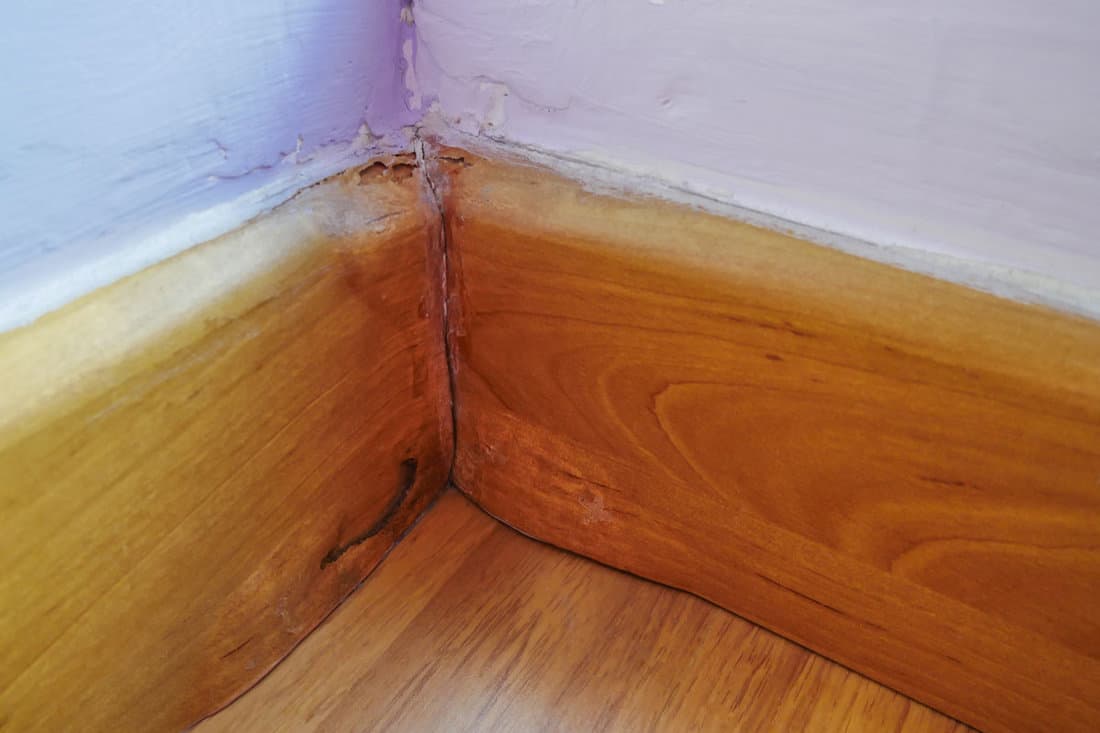
One of the indications of water damage is moisture stains, which point to problems behind your baseboards. Large or small wet spots of discoloration on your baseboards are the typical appearance of water stains and indicate a concealed plumbing issue.
3. Dripping Noise
Hidden leaks behind your baseboard produce unusual dripping sounds. You probably have a plumbing problem if you can hear water running behind the baseboard. The plinking sound is typically heard after turning off a sink or flushing the toilet.
4. Peeled Paint
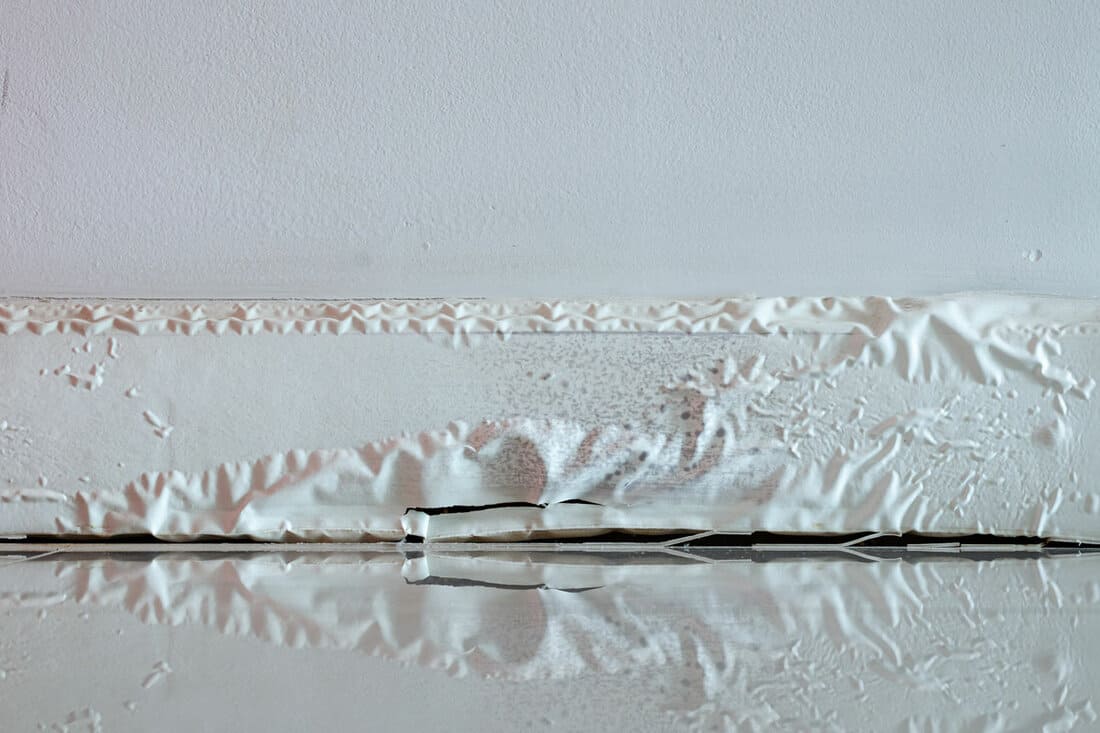
The paint may eventually start peeling if there is too much moisture behind the baseboard. Panels made of fiberboard are especially prone to water buildup.
Causes Of Water Coming From Baseboard When It Rains
https://www.shutterstock.com/image-photo/wood-skirting-board-became-swelling-because-1367025818
Even a minor concealed leak can cause significant damage to your home's floors, walls, and baseboards. You need to pinpoint the source when you have a leak.
It is usually best to evaluate the damage and ensure you can tackle the process on your own before deciding whether to repair or replace broken baseboards. Here are the top five causes of rain entering your baseboard:
1. Roof Leaks
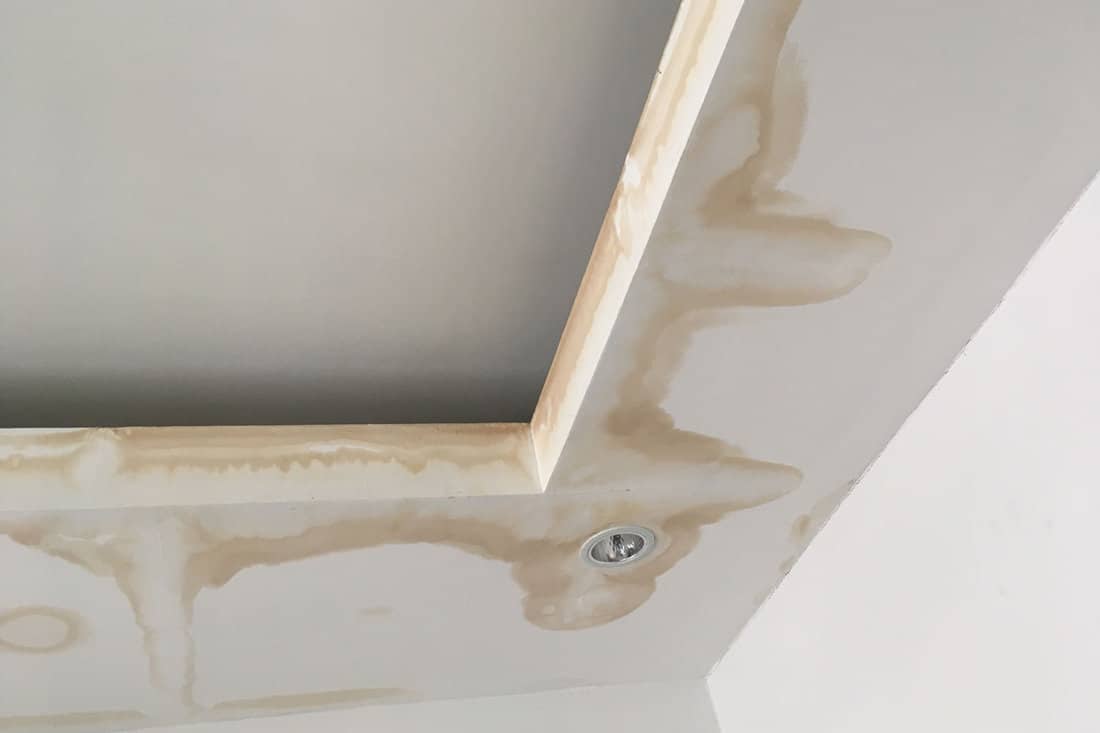
Any roof can only last so long. Most can last up to 50 years, depending on the roof system. The water damage on your baseboards may result from a concealed roof leak.
Rainwater may occasionally seep through the baseboards and into the space between the walls and the roof.
Watch the video below to learn more about roof leaks.
2. Waterproofing
Due to improper waterproofing membranes, rainwater can seep into a house. Utilizing suitable waterproofing materials is crucial.
Click here to see this Schluter Kerdi waterproofing membrane on Amazon.
3. Windows
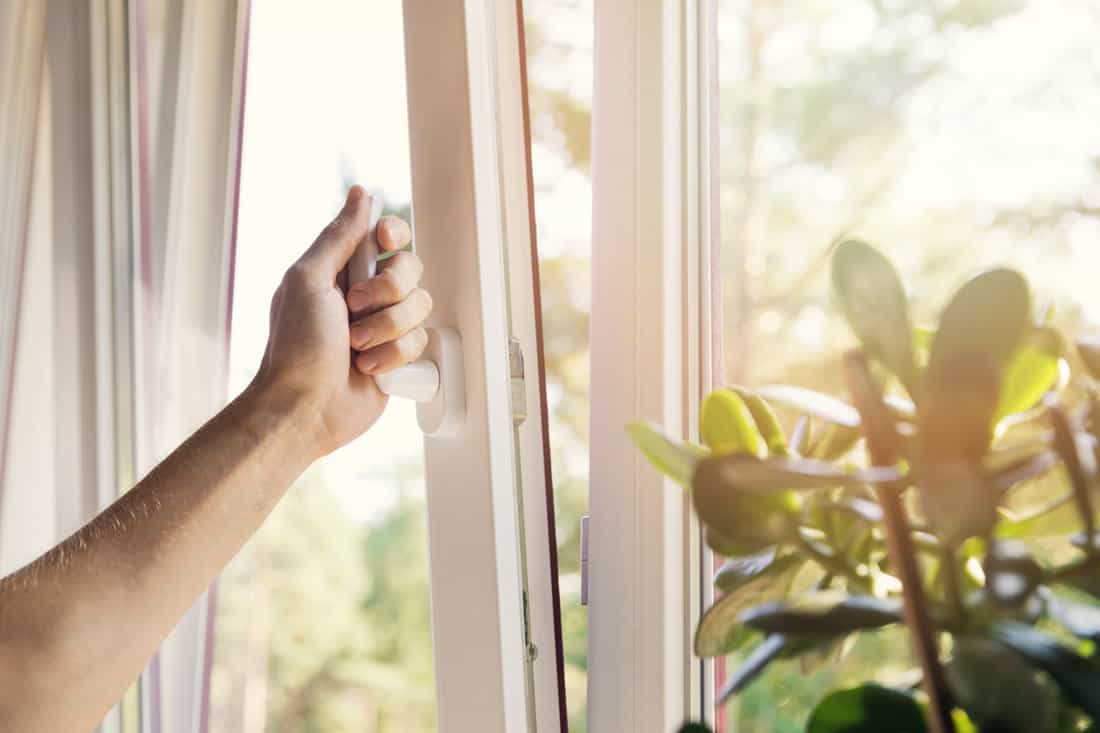
When it rains, if you see water pouring from your baseboards, you probably have a leak somewhere in your house. Make that all of the windows are shut and sealed to prevent leaks.
4. Obstructed Gutters
If the gutters can't move the water, it can eventually seep into the flooring and foundation of your house.
5. Unreliable Appliances
Water might seep into your baseboards as a result of broken appliances. Inspect the appliances for leaks. Properly maintaining them is essential.
What To Do With Leaking Water From Baseboards?
Most homes have experienced leaks at some point, and it's critical to address them immediately. This may require some detective work because the leak's location may not be precisely where you perceive the water.
Until the water source is fixed and the damaged materials are repaired, the harm caused by too much water or moisture will keep spreading and worsening. Here's what you can do with the leaking from your baseboards:
1. Inspect Cracks and Water Stains
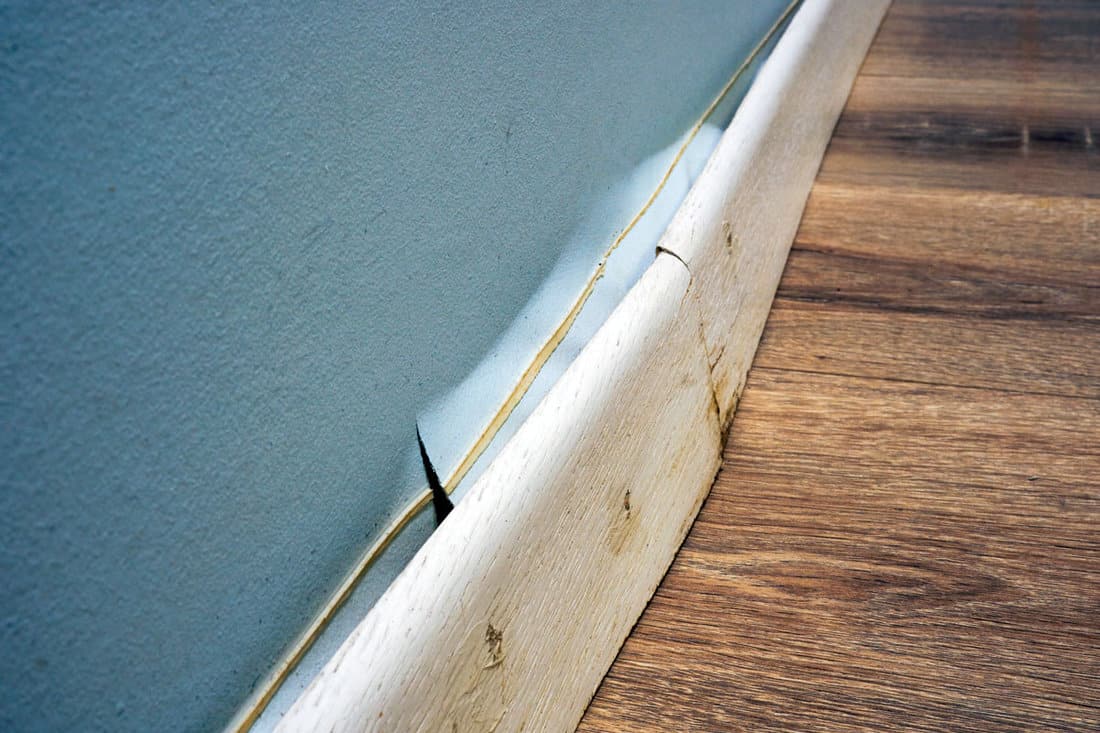
Check the area of the baseboard where cracks and water stains are present. To find out if you have moisture content in your baseboard, you can use a moisture meter.
Lean the meter up against the baseboard. The location with the highest reading is closest to the concealed leak.
Click here to see this digital moisture meter on Amazon.
2. Clean the Baseboards
Clean the baseboards first if the damage is minor. To clean them, use a moist cloth or sponge. Use an all-purpose cleaner if they require a more thorough cleaning.
Click here to see this Lysol all-purpose cleaner on Amazon.
You can use a handheld vacuum created to suck up moisture or a shop vac to get rid of the majority of the water. You can use a mop to clean the remaining water until little is left.
Click here to see this handheld vacuum on Amazon.
3. Sand the Areas
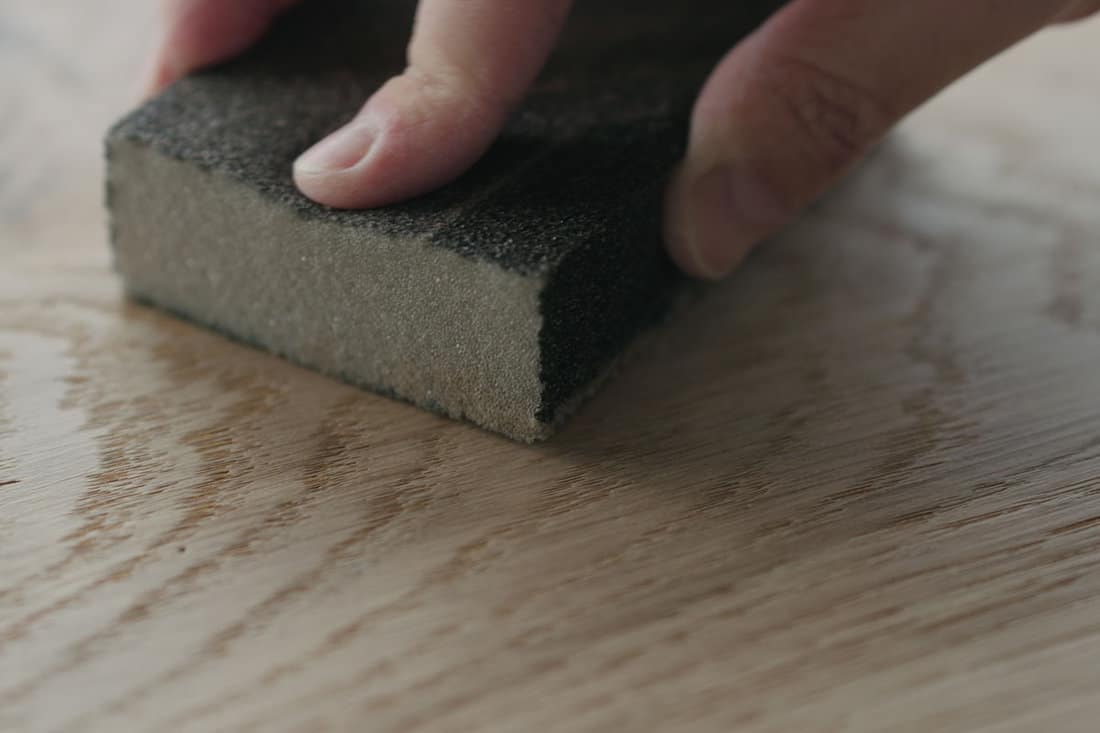
Sand the areas that are expanding. Sand cautiously to avoid damaging the non-swollen parts. This method makes sure everything is completely smooth.
4. Wipe Off Dust
You should wipe the baseboards down to remove the dust created during the sanding process.
5. Apply Primer
Make use of an appropriate primer for your baseboard. The primer can hide stains and help paint adhere better to the baseboards.
Click here to see this Zinsser Rust-Oleum primer on Amazon.
6. Paint

You can begin painting once the primer has been applied and had time to dry. You can paint baseboards to the appropriate hue. This gives you greater flexibility and eliminates the need to conceal the baseboard with a covering.
Click here to see this Rust-Oleum gloss paint on Amazon.
7. Seal It
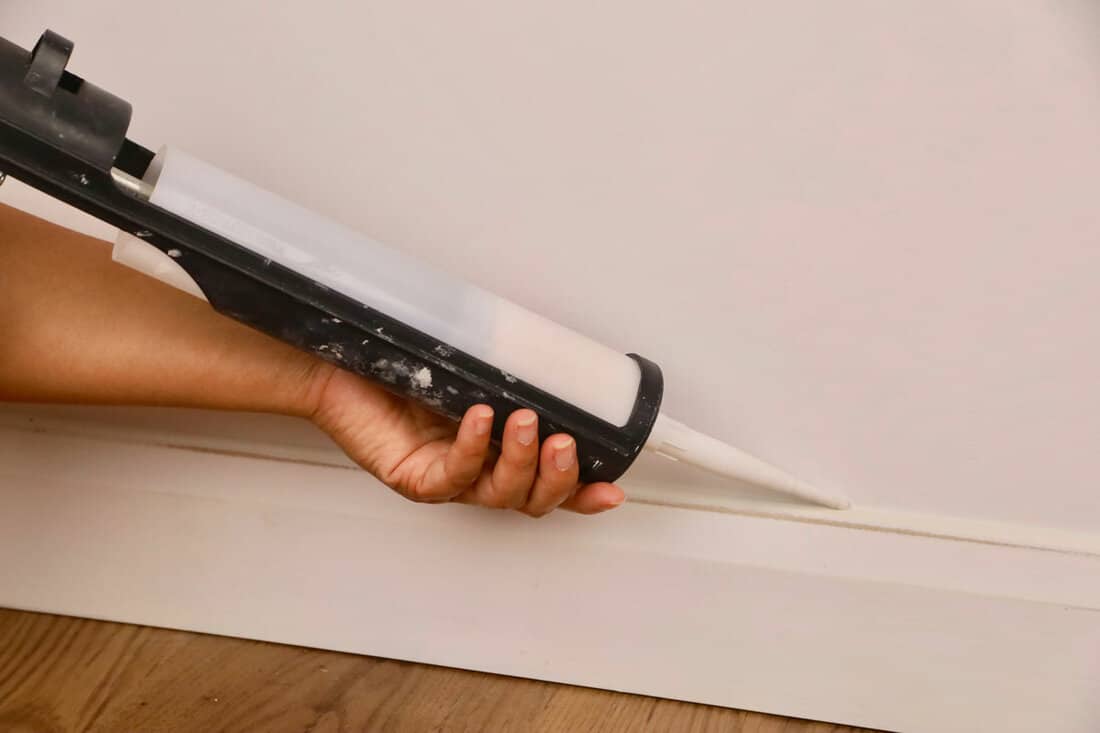
Use a suitable sealant for your baseboard. Applying a sealer to the baseboards before you replace them will help prevent the baseboard from absorbing moisture from the air.
Click here to see this Gorilla caulk & seal on Amazon.
8. Ventilate the area
Ensure the humidity in the space is not too high, and the air is circulated in your home. You can use a dehumidifier to reduce moisture and increase ventilation.
Click here to see this Gocheer dehumidifier on Amazon.
Can Duct Tape Stop A Water Leak?

While duct tape isn't completely waterproof, it can be used as a quick patch for water leaks. Be sure to enclose the leak completely. Additionally, check to see that the tape is in contact with the surface or pipe to avoid any pockets where water could collect.
Click here to see this duct tape on Amazon.
Does Baking Soda Absorb Moisture From Wood?
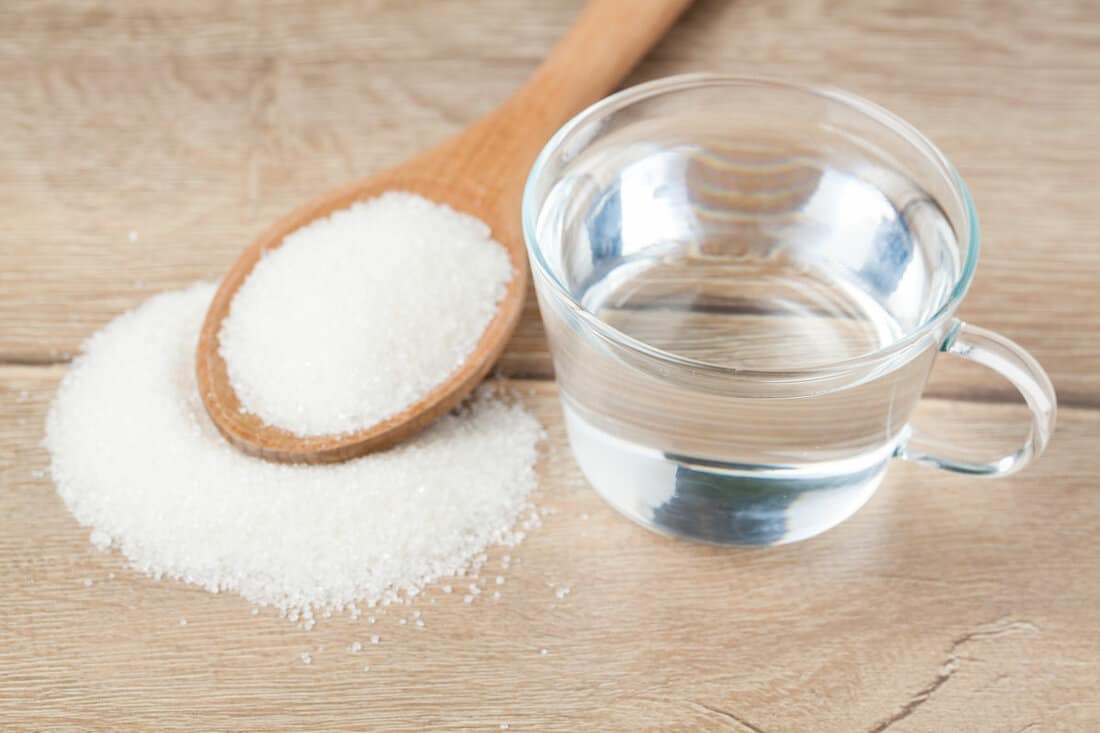
Baking soda can be used for damp absorption and humidity management. It is a hygroscopic material that can absorb water molecules on surfaces, making them drier.
The paste needs to be cohesive to attach to the wood surface. Making a paste out of baking soda and water would be the best method.
Apply the paste over wood surfaces. To ensure that the powder absorbs more water from the wood, it is also a good idea to cover it with a cloth or paper towel.
Click here to see this Arm & Hammer baking soda on Amazon.
Can A Dehumidifier Dry A Wet Floor?
You can use a dehumidifier and set it to its highest level to dry the floors. Set it up in the middle of the space. It can speed up the drying process of a floor when used with fans and heaters.
Commercial dehumidifiers typically take between 24 and 48 hours, depending on the size of the space.
In Closing
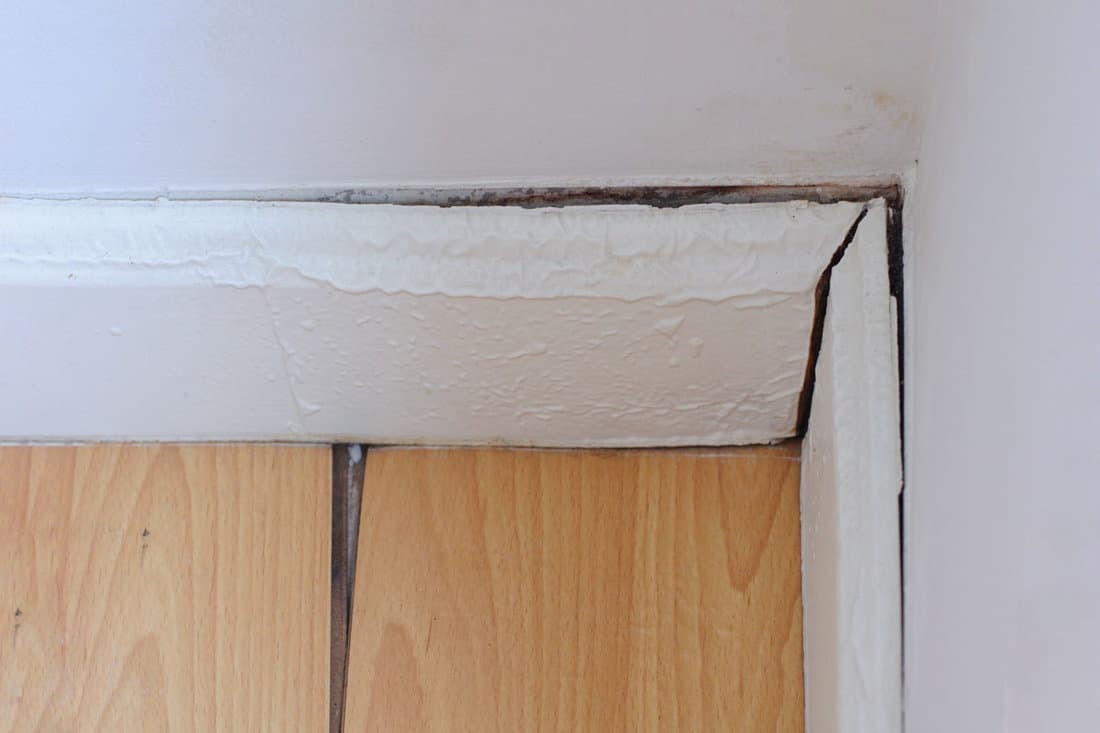
Whatever the cause of baseboards that leak when it rains, you need to take action to stop the problem from happening. You can fix a water leak yourself by drying out the damaged components or replacing them.
Regularly inspect your home for the indications of a hidden water leak so you can take action before it causes significant damage. Consider professional advice if you are uncertain about repairing it yourself.
If you feel inspired, you may want to check out these other posts:













